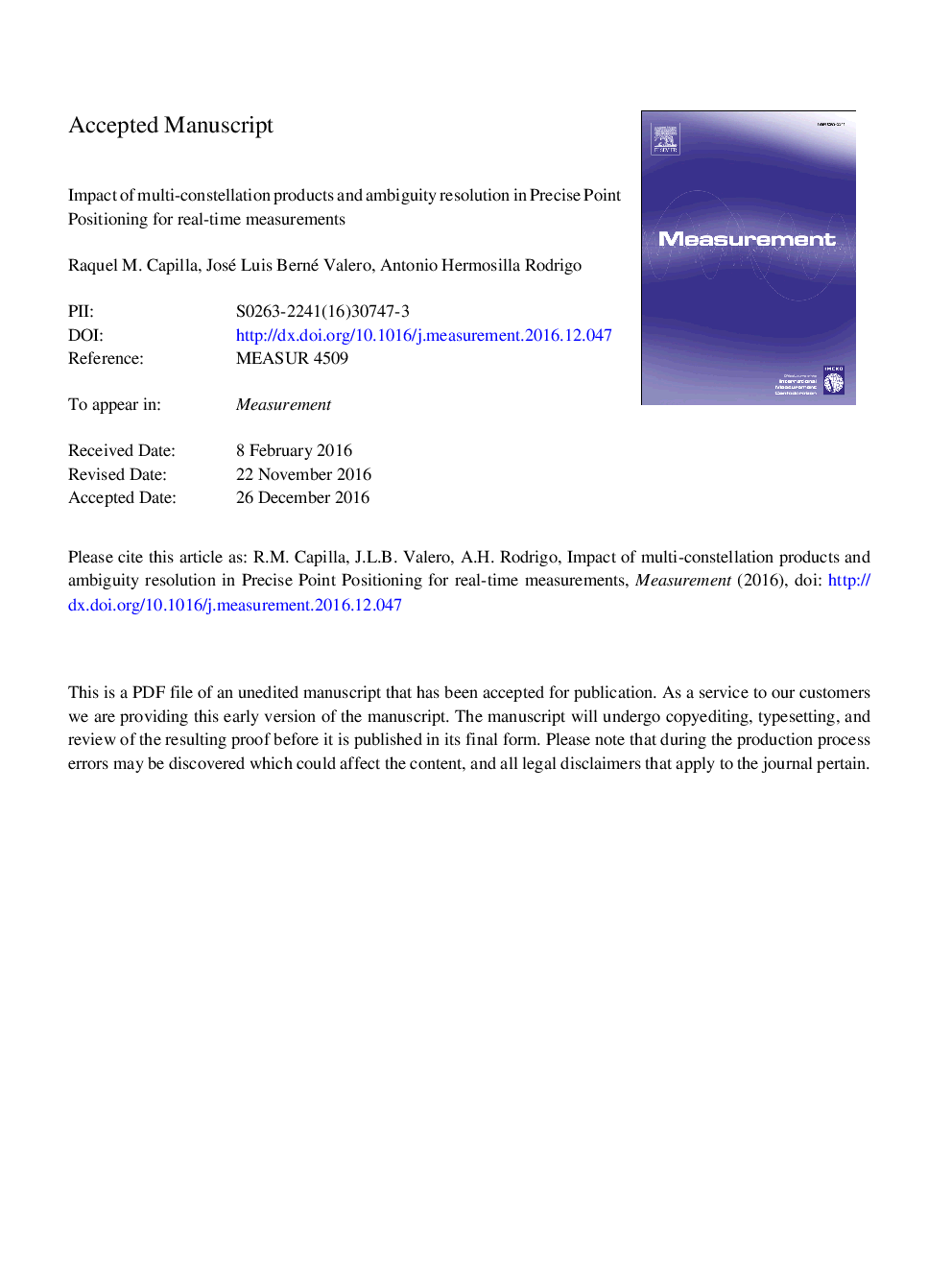| Article ID | Journal | Published Year | Pages | File Type |
|---|---|---|---|---|
| 5006567 | Measurement | 2017 | 18 Pages |
Abstract
Precise Point Positioning (PPP) has revolutionized Global Navigation Satellite Systems (GNSS) processing. This computation method achieves precise positioning with a single receiver and un-differenced observations. Its conceptual basis consists of solving the position with pseudo-range and carrier-phase GNSS measurements, with the application of external clock and orbit satellite corrections, previously estimated signal biases and atmospheric models computed in the International GNSS Service or Analysis Centers. However, in the case study of real-time PPP, the computation engine requires continuous streams of products that must meet certain availability requirements. In a case study of real-time measurements the technique is very sensitive to outliers in products and changes in the constellation geometry. As a result, there are long initialization periods, losses of convergence and a lack of accuracy in the results. This study shows how multi-constellation approaches for external products reduce loss of convergence and outliers in the real-time PPP solutions and also highlights the impact that ambiguity resolution has.
Keywords
Related Topics
Physical Sciences and Engineering
Engineering
Control and Systems Engineering
Authors
Raquel M. Capilla, José Luis Berné-Valero, Antonio Hermosilla-Rodrigo,
